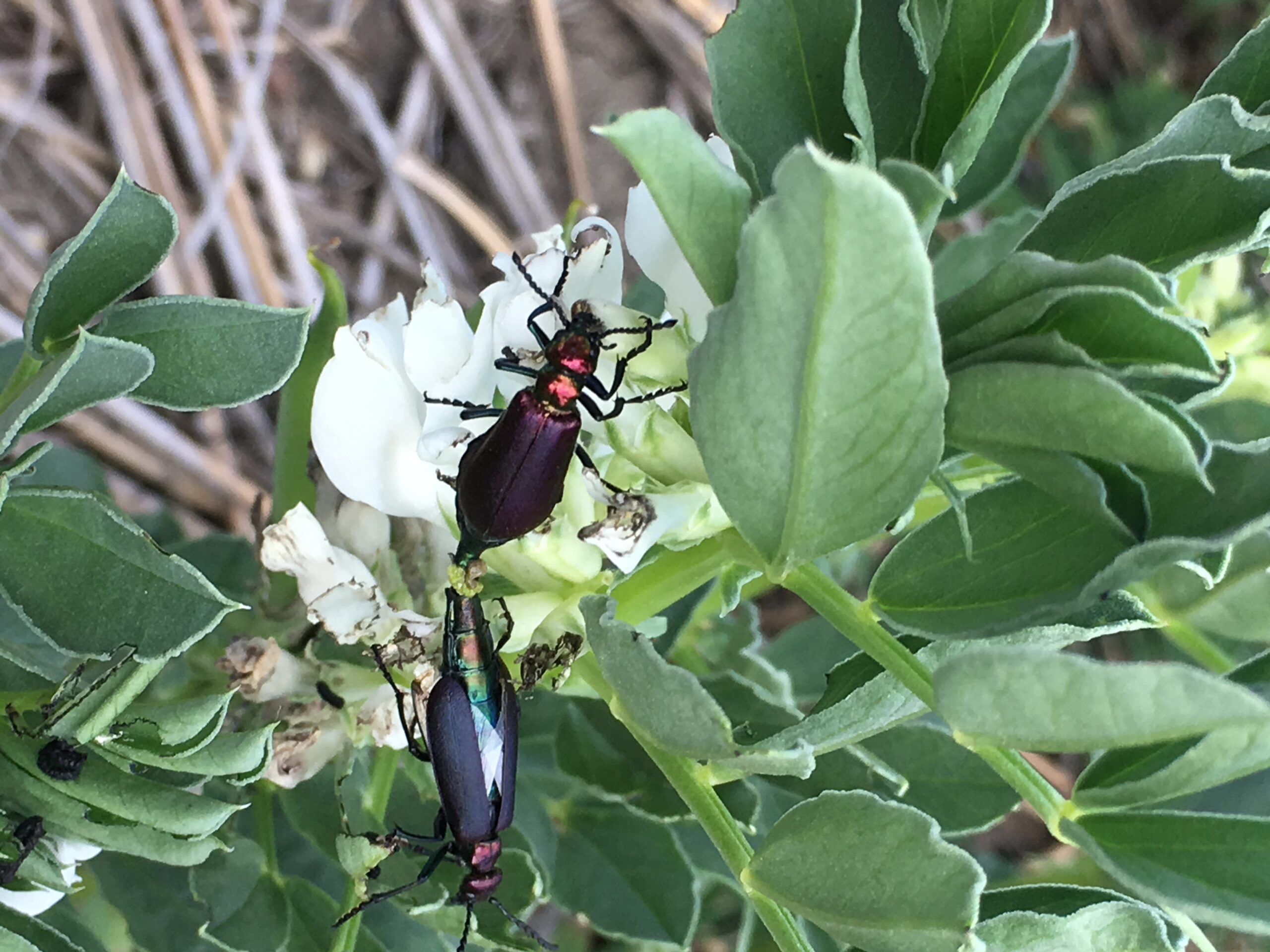Research Objective
To determine the overwintering biology of pea leaf weevil populations in southern Saskatchewan; to assess foliar/nodule damage and yield in field peas in response to seedcoated and foliar insecticides in a field plot study; to compare on-farm yields of treated and untreated seed to develop and validate action thresholds for pea leaf weevil in field peas; to obtain baseline data on aphids and their natural enemies in pulse crops to aid in future development of action thresholds.
The pea leaf weevil and pea aphid are two important insect pests of field pea and other pulse crops in Western Canada. Both insects pose different challenges to producers in terms of their pest management. Pea aphids, for example, are migratory pests in Canada, with populations that can fluctuate significantly between seasons. The pea leaf weevil is an invasive species that is established in southern Alberta and Saskatchewan and is expanding its range north and east. Both the adult and larval stages of the pea leaf weevil can impact yield. To address key research gaps regarding pea leaf weevil
and pea aphids in Saskatchewan, we conducted research to address four objectives. First, we used a variety of trapping techniques including pitfall traps and emergence cages to learn about the overwintering behaviour and spring emergence of pea leaf weevil.
Weevils emerged from around their secondary host plants, such as alfalfa after the winter, and their peak trap capture in the spring coincided with warming daily temperatures in mid to late May. In the laboratory, new generation adult weevils were exposed to a range of temperatures typical to winter conditions on the prairies; weevils died within 30 days when exposed to daily mean temperatures of -10˚C. Less mortality was observed at warmer temperatures similar to those expected with insulation provided by snow and soil. Second, we conducted a small plot study to evaluate the efficacy of systemic insecticide seed treatment with thiamethoxam and foliar insecticide application with cyhalothrin-lambda at Swift Current, SK. When weevil densities were high enough to inflict damage on field peas, the systemic insecticide effectively prevented feeding damage by adult and larval weevils and protected yields. The foliar insecticide application had no effect on pea leaf weevil damage to field peas and probably is a poor management option. Third, we assessed the efficacy of the systemic insecticide against pea leaf weevils in a field scale experiment conducted in 2018 and 2019 at multiple sites in Alberta, using the same evaluation techniques used in the small plot study in Swift Current. Weevil densities were highly variable at the sites in both years, but preliminary analyses indicate that when weevil densities were moderate, the systemic insecticide prevented feeding damage by adult and larval weevils. Finally, we monitored populations of pea aphids and their natural enemies in field pea, faba bean, lentil, and alfalfa crops using sweep net sampling and field observations. Pea aphid populations fluctuate between years due to the migratory nature of this pest (it is not known to overwinter in large numbers in Canada), but when aphids were present, so were their natural enemies, including lady beetles, green lacewings, damsel bugs, minute pirate bugs, and parasitoids. This information will be used to guide the development of future research projects focused on pea aphid management in Saskatchewan.
